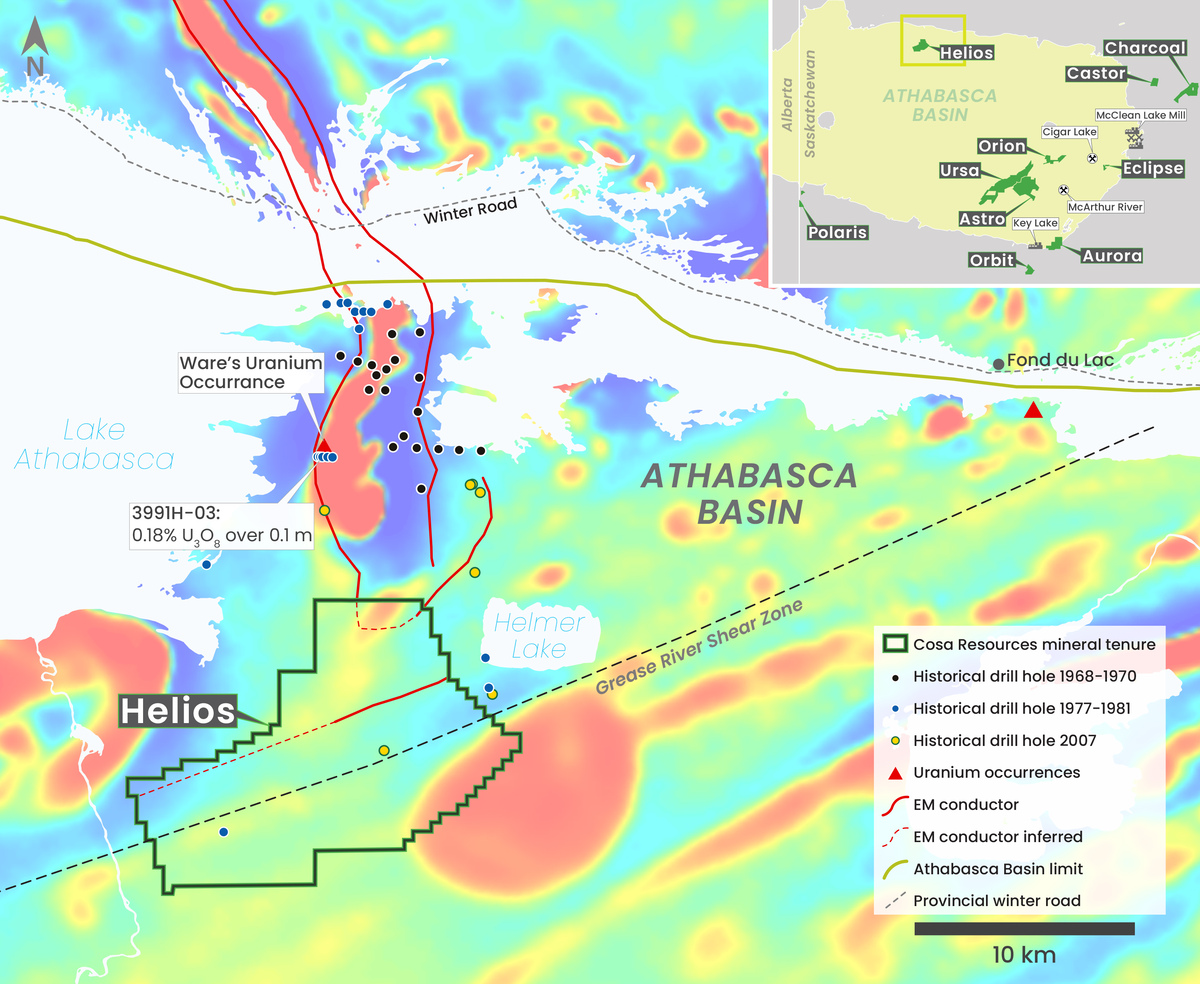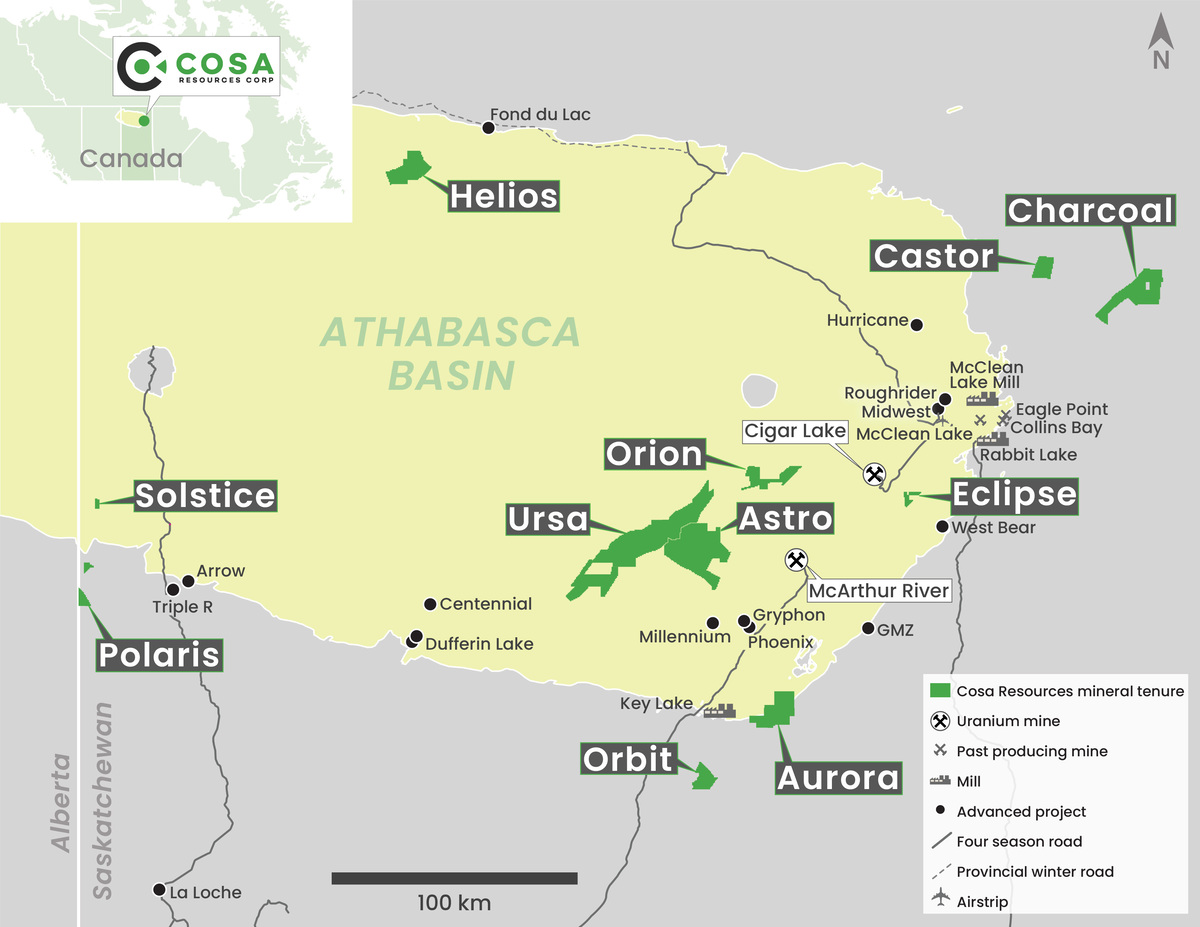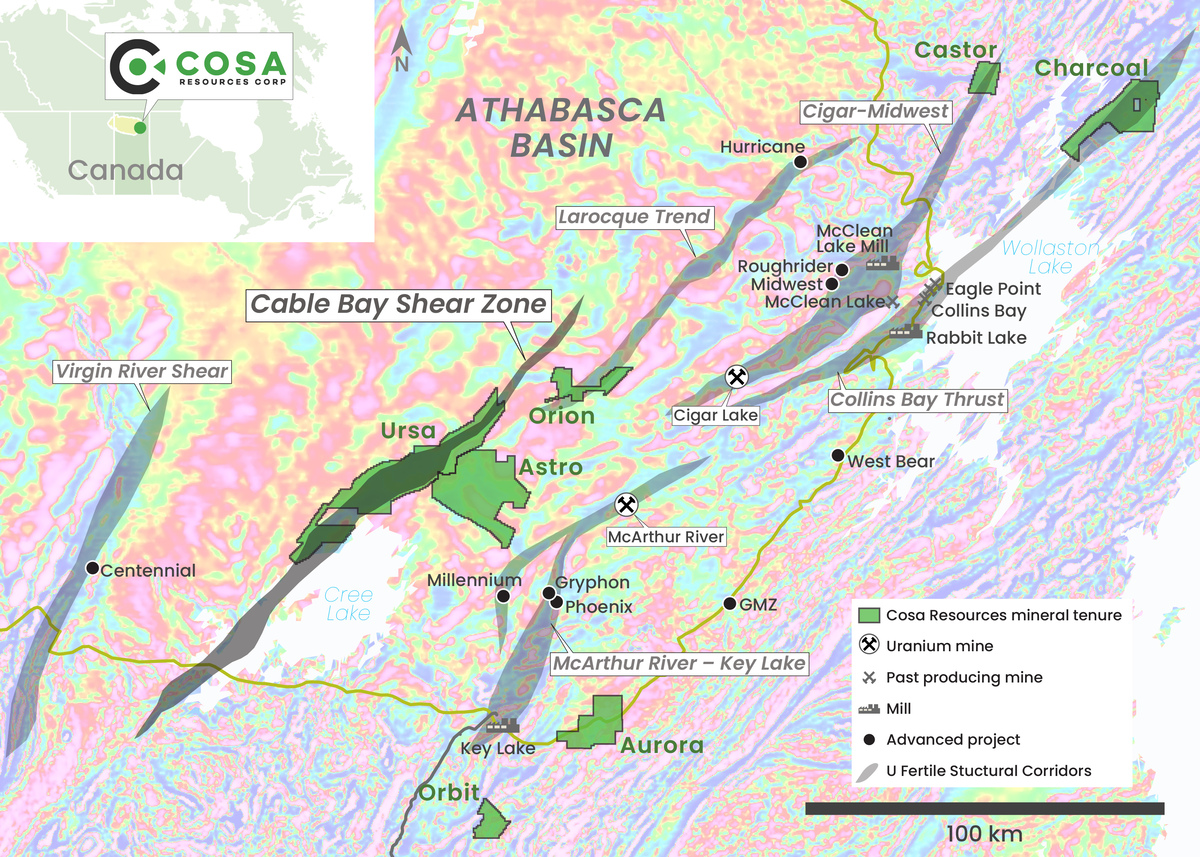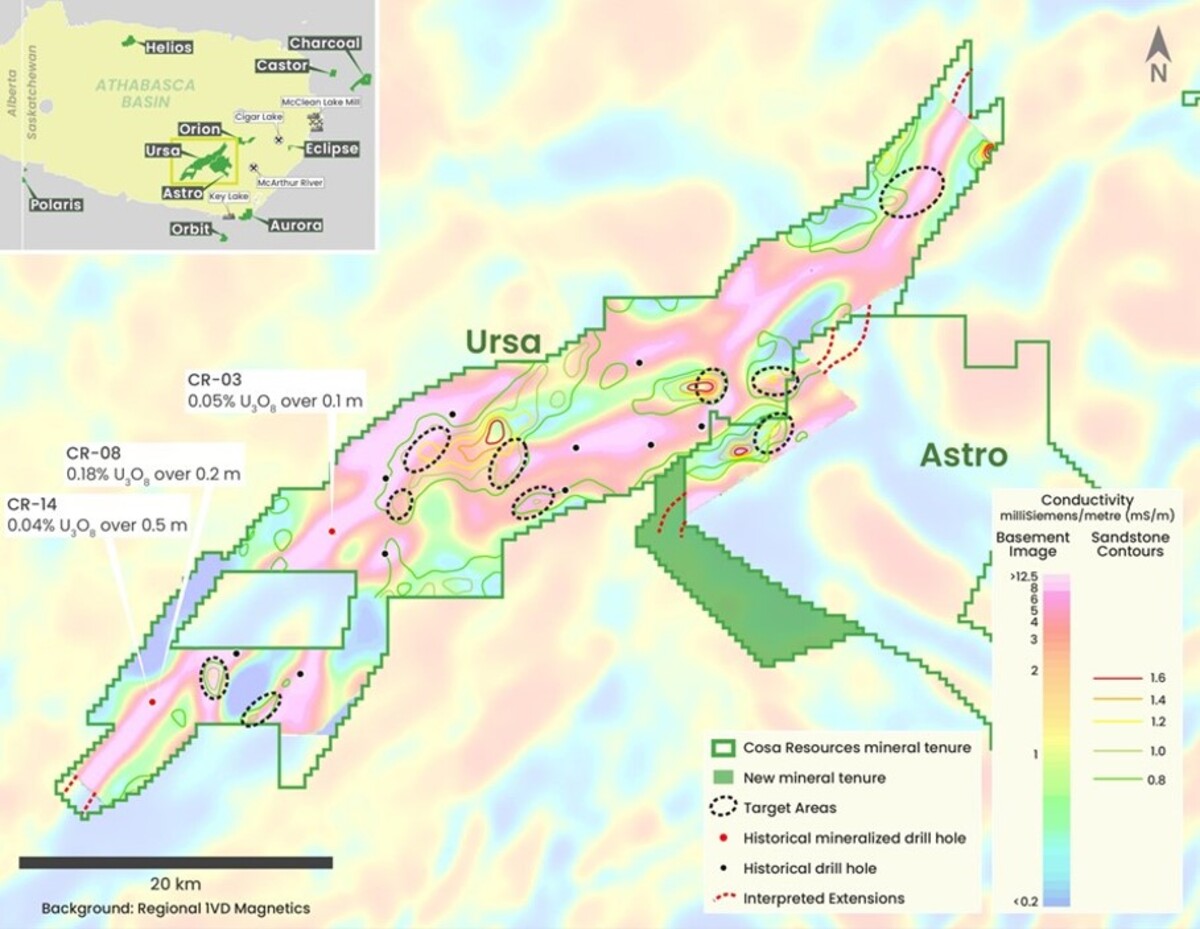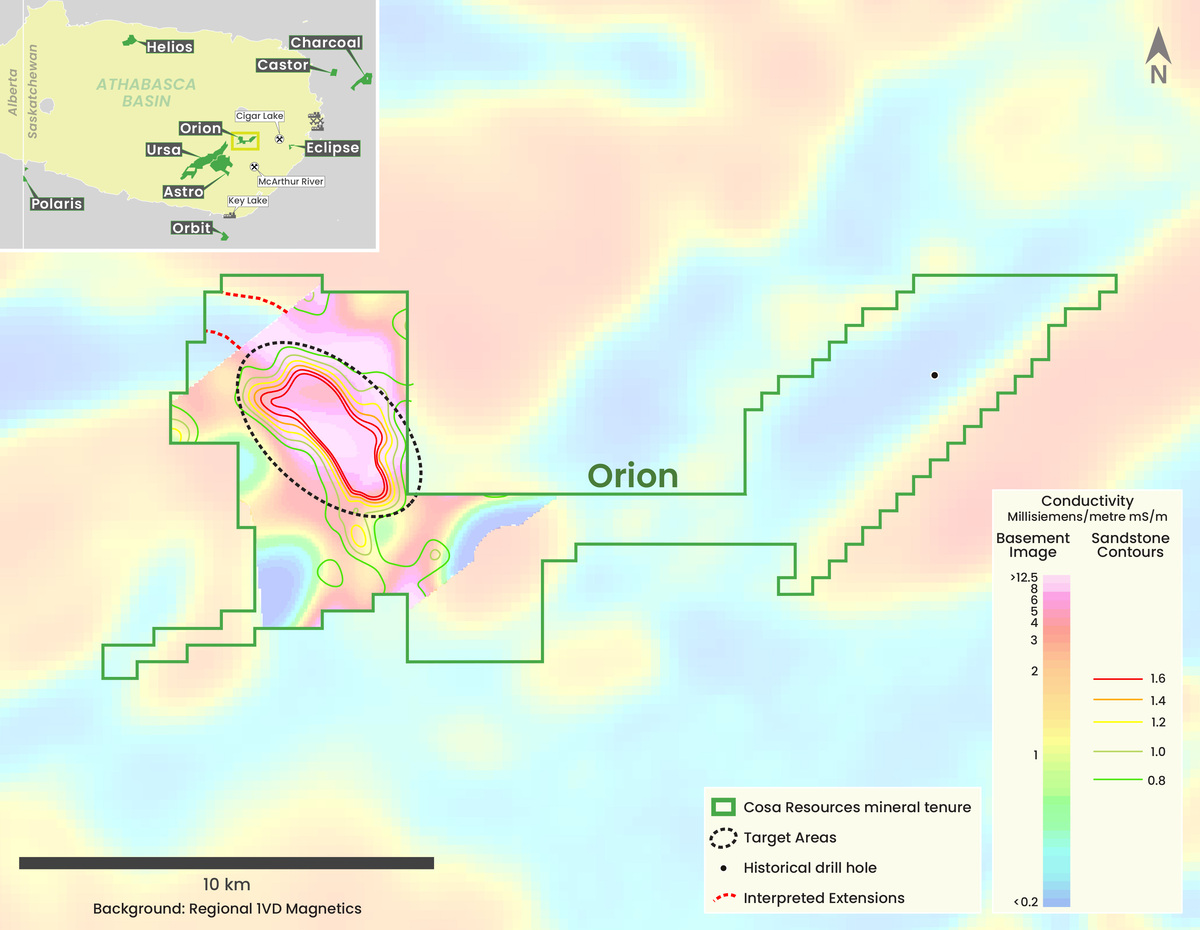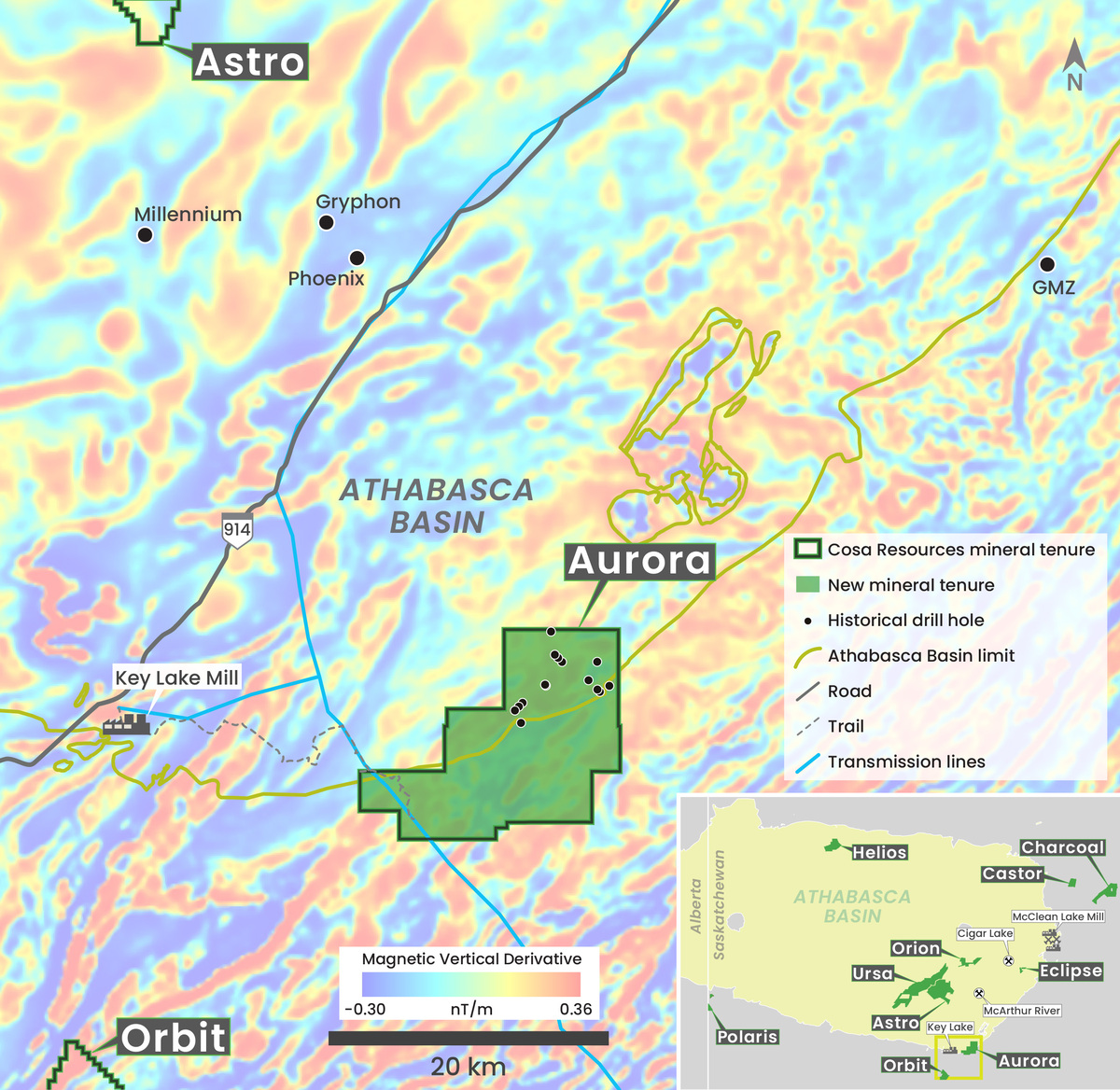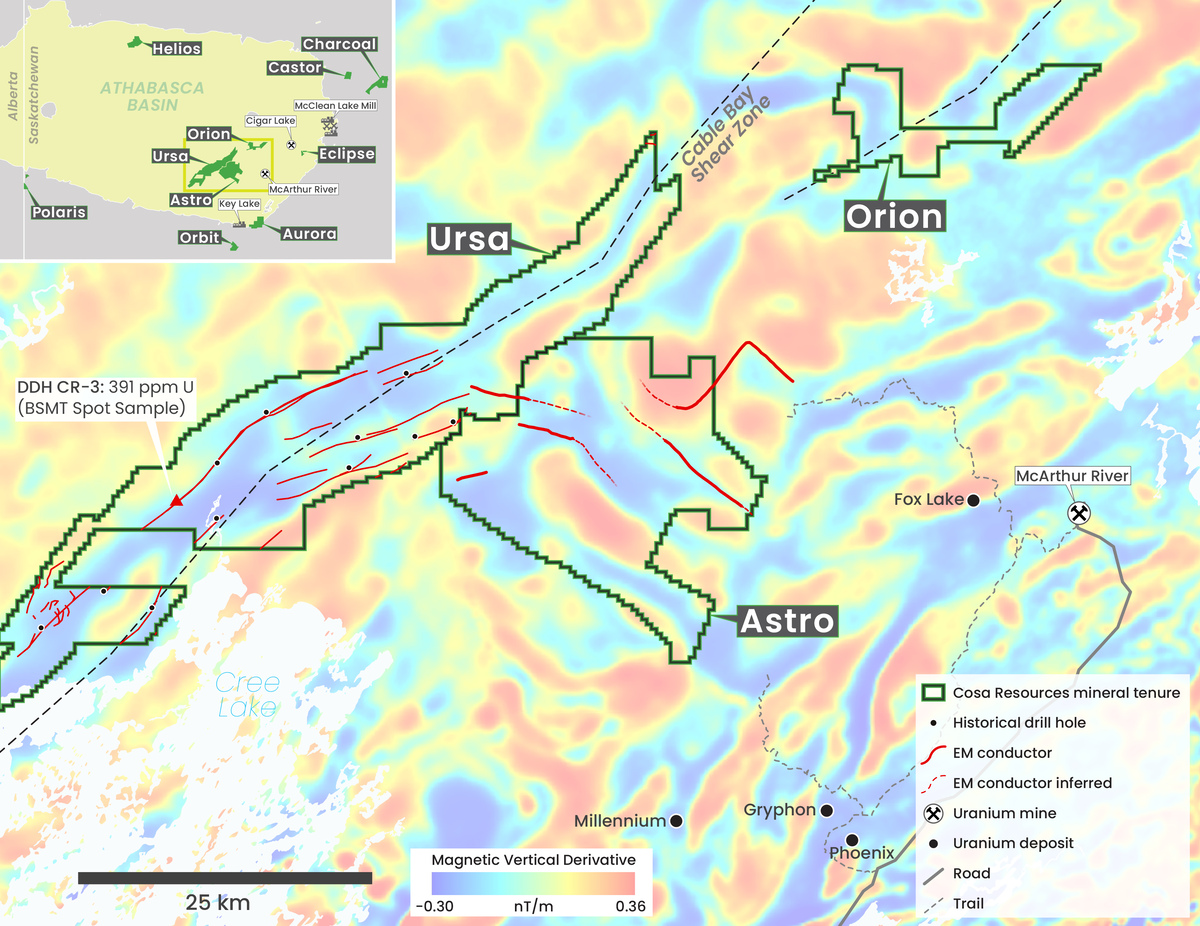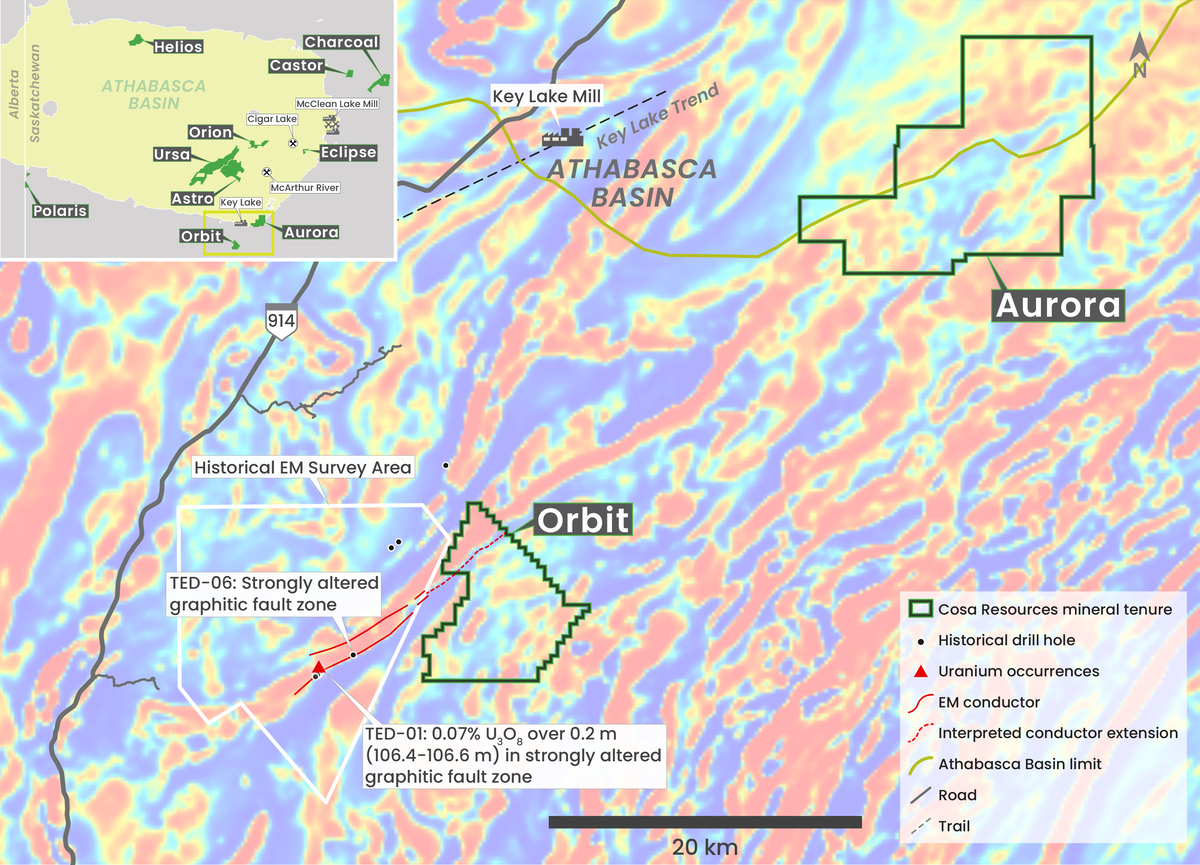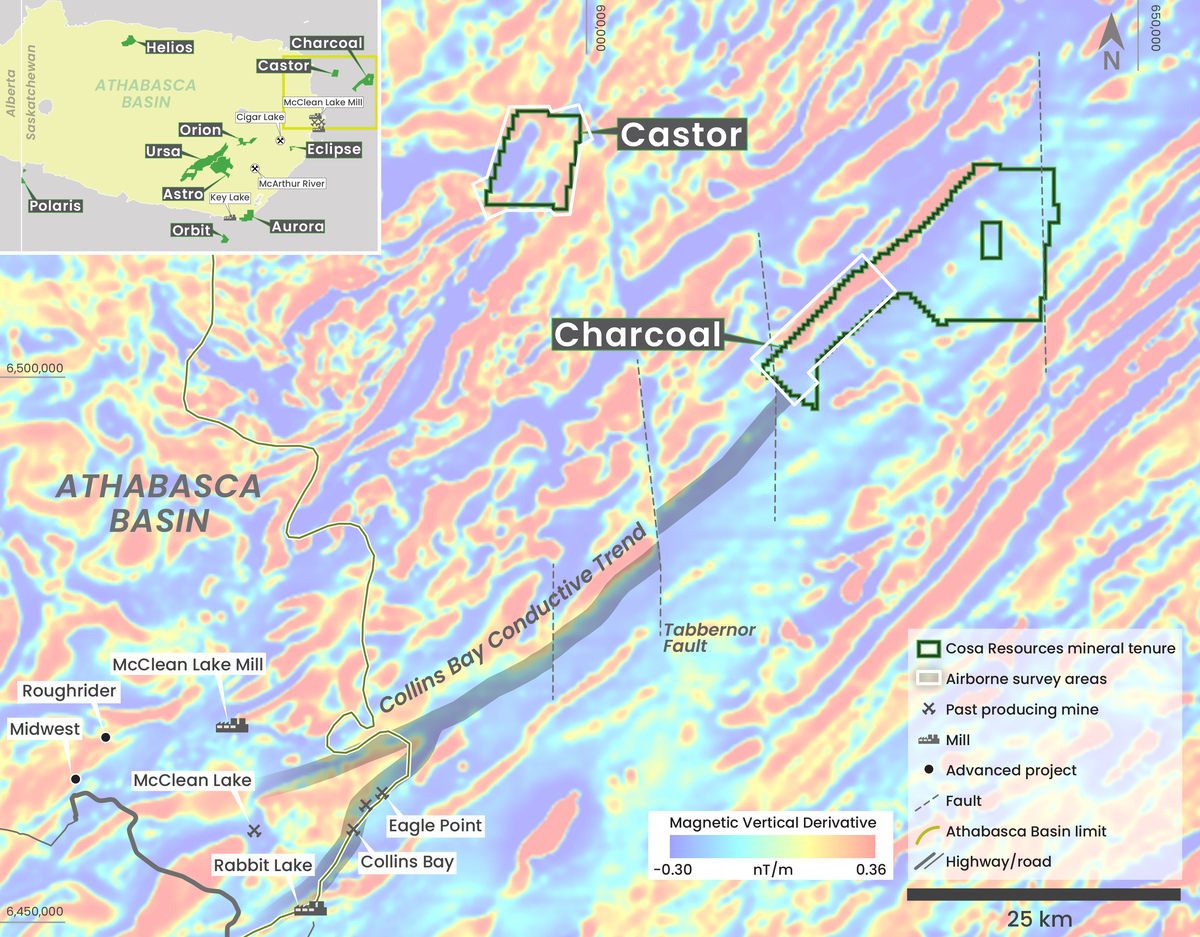The 12,835-hectare Helios property is located 14 kilometres south of the northern rim of the Athabasca Basin and 28 kilometres southwest of the community of Fond du Lac (Figure 7).
The broader area was explored from 1968 to 1970 and again from 1977 to 1981. Work in the latter period discovered the Ware's Uranium Occurrence, a zone of outcropping sandstone cut by uranium-bearing fracturing located six kilometres along strike to the north of Helios. Limited follow-up drilling in 1979 determined the fracturing penetrates the full thickness of the Athabasca sandstone; drill hole 3991H-03 intersected 0.18% U3O8 over 0.1 metres within a zone of hydrothermal alteration at the unconformity. Almost no modern exploration work has been completed since.
The northern portion of Helios covers the extension of two sub-parallel, curvilinear conductive trends flanking a central magnetic high. Results from a 2005 airborne electromagnetic survey suggest these conductive trends continue onto the Helios property. The Ware's Uranium Occurrence is associated with the more westerly of these trends (Figure 7). A 2007 drill hole testing this trend four kilometres north of Helios intersected favourable illitic and chloritic clay patterns over broad intervals in the middle to lower sandstone. The depth to the unconformity is expected to be between 375 and 500 metres within the northern target area.
The southern portion of Helios covers 15 kilometers of the Grease River Shear Zone (GRSZ), a major east-northeast-trending basement structure with a mapped length of over 300 kilometres (Figure 2). The Fond du Lac uranium deposit, located 29 kilometres northeast of Helios, is interpreted to be related to the GRSZ. Drilling immediately east of Helios suggests that post-Athabasca faulting related to the shear zone has offset the sub-Athabasca unconformity by up to 30 metres. Within the property, historical electromagnetic and DC-resistivity surveys have defined approximately five kilometres of basement-hosted electromagnetic conductors associated with the GRSZ with potential for a further 10-kilometre extension to the west-southwest (Figure 7). The depth to the unconformity is interpreted to be between 445 and 850 metres in the southern target area.
Figure 7 - Helios Property Map
